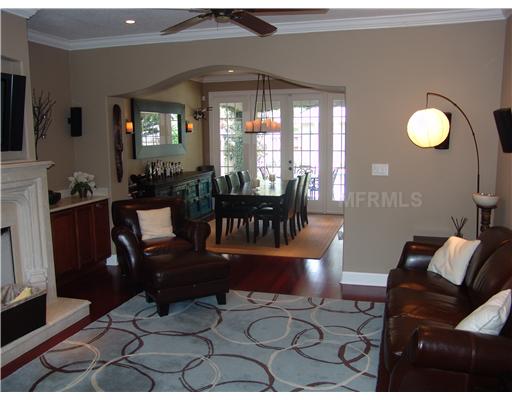I got a call from a prospective client asking me to take pictures of their home which they were putting on the market. The caller said she wasn’t happy with the photos the realtor took. I chuckled to myself because I know all too well the horrible pictures on the Multiple Listing Service (MLS) sites. When I got to the home, the husband told me how the realtor took a few snapshots with a point and shoot and he knew right away the pictures would just not do. Judge for yourself:
The homeowner told me how he hired a professional photographer to sell a previous home and how quickly the home ended up selling. So why don’t more realtors use professional photographers? Maybe they think it’s too expensive. But as I pointed out in a previous blog; depending on the price of the home, the cost could be a fraction of the commission. The payoff is selling the home faster which means not having to lower the price as the listing lingers on the market. Maybe they think mediocre pictures will do just fine. Or maybe their mindset is stuck in the “this-is-the-way-we’ve-always-done-it”.
Ten years ago, if you wanted to buy a house, you had to do some footwork. It required going with your realtor from house to house. Today it’s all done on-line. So it’s even more important to have good pictures to attract more visitors to the property.
[UPDATE 8/28/12: Check out this article from the Wall Street Journal that states home listings with professional photos attract 61% more views: “Get a Picture Perfect Home Sale”]
Consider this quote from a 2010 Wall Street Journal article (it was still getting comments as of June 2012) that cited a study which found homes with professional photography gained higher asking prices.
At the closing table, listings with nicer photos gain anywhere between $934 and $116,076–as measured by the difference between asking and final price–over listings using photos from point-and-click cameras.
Here is the study the WSJ cited with nice charts and graphs: A Picture is Worth a Thousand Dollars.
I could site several more articles and studies that show homebuyers begin the process online, even on their phones and tablets; and that listings with good pictures attract more views and sell at higher prices. It’s time to end the status quo. If you are selling your home, you should demand professional photography. If you are in the business of selling homes you should add professional photography to your arsenal of online marketing. At the very least, it would differentiate you from all the other realtors who think they can do it themselves and settle for far less.













